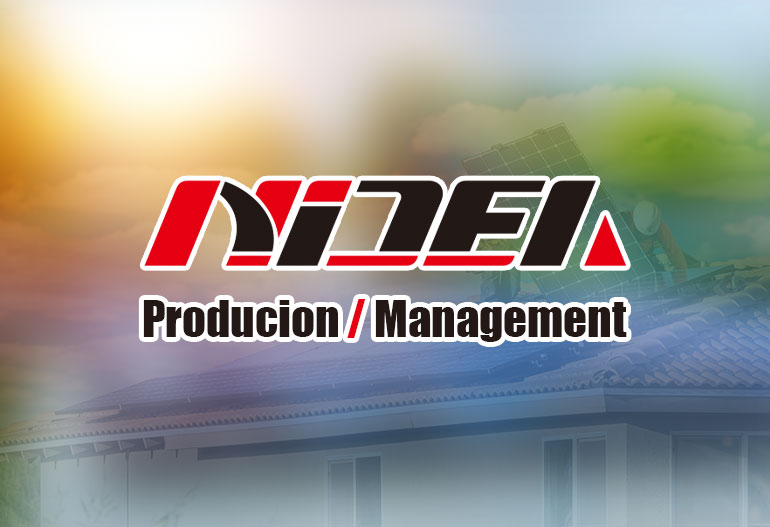Home solar systems have become increasingly popular as a sustainable and cost-effective energy solution. At the core of these systems lies the solar inverter, which converts direct current (DC) from solar panels into alternating current (AC) for household use. The NMS series inverters, renowned for their reliability, efficiency, and smart features, are an excellent choice for residential applications. This article provides a comprehensive guide to selecting the most suitable NMS series inverters for small to medium power requirements, covering technical specifications, application scenarios, and comparative advantages.
Before delving into specific NMS series models, it is essential to understand the critical factors influencing inverter selection for home use:
System Size: Determine the total power output of your solar panel array. Residential systems typically range from 1 kW to 10 kW, depending on roof space and energy consumption.
Load Demand: Calculate the peak power required to run household appliances simultaneously, including high-energy devices like air conditioners and electric water heaters.
Conversion Efficiency: Higher efficiency reduces energy loss during DC-to-AC conversion. Look for inverters with efficiencies exceeding 95% for optimal performance.
MPPT (Maximum Power Point Tracking): Advanced MPPT algorithms ensure the inverter extracts maximum power from solar panels under varying 光照 conditions.
Grid Compatibility: Ensure the inverter meets local grid standards (e.g., voltage, frequency) for seamless integration.
Durability: Inverters must withstand environmental factors like temperature fluctuations, humidity, and dust. Look for IP65-rated models for outdoor installation.
Remote Monitoring: Apps or web platforms allow real-time tracking of energy production, consumption, and system health.
Fault Detection: Automatic diagnostics and alerts help identify issues promptly, minimizing downtime.
The NMS series offers a range of inverters tailored to home solar systems. Below are the most recommended models for small to medium power applications:
94–97% Conversion Efficiency: Minimizes energy loss, ensuring maximum utilization of solar power.
Dual MPPT Channels: Optimizes energy harvest from panels with varying orientations or shading.
IP65 Rating: Dust and water-resistant, suitable for outdoor installation.
Thermal Management: Efficient cooling systems prevent overheating during prolonged operation.
Long Lifespan: Durable components and rigorous testing ensure a service life of 10–15 years.
Wireless Connectivity: Built-in Wi-Fi or Bluetooth allows real-time monitoring via mobile apps (e.g., NMS Solar Manager).
Data Analytics: Provides insights into energy production, consumption, and system performance.
Remote Fault Diagnosis: Alerts users to issues and enables remote troubleshooting.
AFCI Protection: Detects and mitigates arc faults, reducing fire hazards.
Grid Protection: Automatically disconnects during grid failures to prevent backfeeding.
Overload Protection: Shuts down the system to avoid damage from excessive current.
The NMS series outperforms other popular brands in key aspects:
NMS-3000-48: 96% efficiency vs. SAJ R5-3~8K-S2’s 97.8% efficiency.
Advantage: NMS offers comparable efficiency at a lower cost, making it more budget-friendly for home users.
NMS-1500-24: IP65 rating vs. Huawei SUN2000-1KTL’s IP65 rating.
Advantage: Both offer similar durability, but NMS models are more lightweight and easier to install.
Location: Install in a well-ventilated, shaded area away from moisture and extreme temperatures.
Mounting: Use wall brackets or outdoor enclosures for stability.
DC Side: Connect solar panels to the inverter using MC4 connectors, ensuring proper polarity.
AC Side: Link the inverter to the grid via a circuit breaker, following local electrical codes.
Testing: Verify voltage, current, and frequency outputs before grid connection.
Software Setup: Configure the inverter via the mobile app or web portal.
Energy Bill Reduction: A 3 kW system can save $300–$600 annually in electricity costs.
ROI Timeline: Typically 5–8 years, depending on local incentives and energy prices.
Standard Warranty: 5–10 years for NMS inverters.
Extended Warranty: Available for an additional cost, covering parts and labor.
The NMS series inverters offer a compelling combination of efficiency, reliability, and smart features, making them an ideal choice for home solar systems. Whether you’re a small household aiming for partial energy independence or a large home seeking full grid parity, there’s an NMS model to suit your needs. By selecting the right inverter and optimizing your system design, you can maximize energy savings, reduce environmental impact, and enjoy long-term financial benefits.
Final Recommendations:
Small Homes: NMS-1000-12 or NMS-1500-24.
Medium Homes: NMS-3000-48.
Large Homes/Businesses: NMS-5000-48.
Invest in an NMS series inverter today and embrace the future of sustainable home energy.

